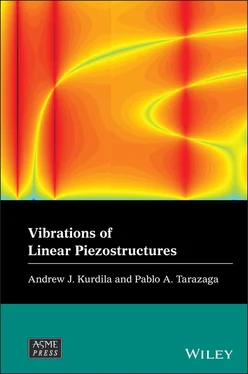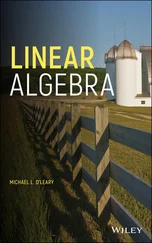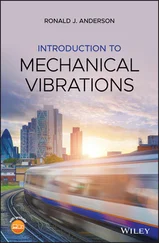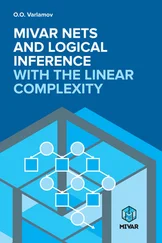231 221
232 222
233 223
234 225
235 226
236 227
237 229
238 230
239 231
240 232
241 233
242 234
243 235
Computer Vision for Structural Dynamics and Health Monitoring
Dongming Feng, Maria Q Feng
Theory of Solid‐Propellant Nonsteady Combustion
Vasily B. Novozhilov, Boris V. Novozhilov
Introduction to Plastics Engineering
Vijay K. Stokes
Fundamentals of Heat Engines: Reciprocating and Gas Turbine Internal Combustion Engines
Jamil Ghojel
Offshore Compliant Platforms: Analysis, Design, and Experimental Studies
Srinivasan Chandrasekaran, R. Nagavinothini
Computer Aided Design and Manufacturing
Zhuming Bi, Xiaoqin Wang
Pumps and Compressors
Marc Borremans
Corrosion and Materials in Hydrocarbon Production: A Compendium of Operational and Engineering Aspects
Bijan Kermani and Don Harrop
Design and Analysis of Centrifugal Compressors
Rene Van den Braembussche
Case Studies in Fluid Mechanics with Sensitivities to Governing Variables
M. Kemal Atesmen
The Monte Carlo Ray‐Trace Method in Radiation Heat Transfer and Applied Optics
J. Robert Mahan
Dynamics of Particles and Rigid Bodies: A Self‐Learning Approach
Mohammed F. Daqaq
Primer on Engineering Standards, Expanded Textbook Edition
Maan H. Jawad and Owen R. Greulich
Engineering Optimization: Applications, Methods and Analysis
R. Russell Rhinehart
Compact Heat Exchangers: Analysis, Design and Optimization using FEM and CFD Approach
C. Ranganayakulu and Kankanhalli N. Seetharamu
Robust Adaptive Control for Fractional‐Order Systems with Disturbance and Saturation
Mou Chen, Shuyi Shao, and Peng Shi
Robot Manipulator Redundancy Resolution
Yunong Zhang and Long Jin
Stress in ASME Pressure Vessels, Boilers, and Nuclear Components
Maan H. Jawad
Combined Cooling, Heating, and Power Systems: Modeling, Optimization, and Operation
Yang Shi, Mingxi Liu, and Fang Fang
Applications of Mathematical Heat Transfer and Fluid Flow Models in Engineering and Medicine
Abram S. Dorfman
Bioprocessing Piping and Equipment Design: A Companion Guide for the ASME BPE Standard
William M. (Bill) Huitt
Nonlinear Regression Modeling for Engineering Applications: Modeling, Model Validation, and Enabling Design of Experiments
R. Russell Rhinehart
Geothermal Heat Pump and Heat Engine Systems: Theory and Practice
Andrew D. Chiasson
Fundamentals of Mechanical Vibrations
Liang‐Wu Cai
Introduction to Dynamics and Control in Mechanical Engineering Systems
Cho W. S. To
Vibrations of Linear Piezostructures
Andrew J. Kurdila and Pablo A. Tarazaga
Virginia Polytechnic Institute and State University

This edition first published 2021
© 2021 John Wiley & Sons Ltd
This Work is a co‐publication between John Wiley & Sons Ltd and ASME Press
All rights reserved. No part of this publication may be reproduced, stored in a retrieval system, or transmitted, in any form or by any means, electronic, mechanical, photocopying, recording or otherwise, except as permitted by law. Advice on how to obtain permission to reuse material from this title is available at http://www.wiley.com/go/permissions.
The right of Andrew J. Kurdila and Pablo A. Tarazaga to be identified as the authors of this work has been asserted in accordance with law.
Registered Office
John Wiley & Sons, Inc., 111 River Street, Hoboken, NJ 07030, USA
Editorial Office
111 River Street, Hoboken, NJ 07030, USA
For details of our global editorial offices, customer services, and more information about Wiley products visit us at www.wiley.com.
Wiley also publishes its books in a variety of electronic formats and by print-on-demand. Some content that appears in standard print versions of this book may not be available in other formats.
Limit of Liability/Disclaimer of Warranty
While the publisher and authors have used their best efforts in preparing this work, they make no representations or warranties with respect to the accuracy or completeness of the contents of this work and specifically disclaim all warranties, including without limitation any implied warranties of merchantability or fitness for a particular purpose. No warranty may be created or extended by sales representatives, written sales materials or promotional statements for this work. The fact that an organization, website, or product is referred to in this work as a citation and/or potential source of further information does not mean that the publisher and authors endorse the information or services the organization, website, or product may provide or recommendations it may make. This work is sold with the understanding that the publisher is not engaged in rendering professional services. The advice and strategies contained herein may not be suitable for your situation. You should consult with a specialist where appropriate. Further, readers should be aware that websites listed in this work may have changed or disappeared between when this work was written and when it is read. Neither the publisher nor authors shall be liable for any loss of profit or any other commercial damages, including but not limited to special, incidental, consequential, or other damages.
Library of Congress Cataloging-in-Publication Data
Names: Kurdila, Andrew, author. | Tarazaga, Pablo (Pablo A.), author.
Title: Vibrations of linear piezostructures / Andrew J. Kurdila and Pablo A. Tarazaga.
Description: First edition. | Hoboken, NJ : John Wiley & Sons, 2021. | Series: Wiley-ASME Press series | Includes bibliographical references and index.
Identifiers: LCCN 2020027699 (print) | LCCN 2020027700 (ebook) | ISBN 9781119393405 (cloth) | ISBN 9781119393504 (adobe pdf) | ISBN 9781119393528 (epub) | ISBN 9781119393382 (obook)
Subjects: LCSH: Piezoelectricity. | Vibration.
Classification: LCC QC595 .K78 2021 (print) | LCC QC595 (ebook) | DDC 537/.2446--dc23
LC record available at https://lccn.loc.gov/2020027699
LC ebook record available at https://lccn.loc.gov/2020027700
Cover Design: Wiley
Cover Image: Pablo A. Tarazaga
The rise of piezoelectric materials as sensors and actuators in engineering systems got started around 1980 and began to make an impact in the world of vibrations about five years after that. Subsequently, it started to explode into the 90s with topics such shunt damping, active control, structural health monitoring and energy harvesting. As a result, the need to document the fundamentals and intricacies of modeling piezoelectric materials in the context of vibrations in book form will well serve a variation of communities. The presentation here puts the topic on a firm mathematical footing.
The authors are uniquely qualified to provide a sophisticated analytical framework with an eye for applications. Professor Kurdila has nearly four decades of experience in modeling of multi‐physics systems. He authored two other books, one on structural dynamics, and several research monographs. Professor Tarazaga is an experienced creator of piezoelectric solutions to vibration and control problems. Both are well published in their respective research areas of research. Their combined expertise in researching vibratory systems integrated with piezoelectric materials enables this complete and detailed book on the topic. This allows for a formal theoretical background which will enable future research.
Читать дальше













